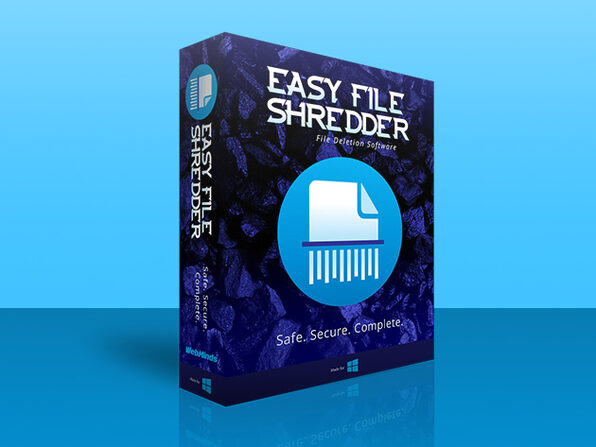

- #Easy file shredder how to#
- #Easy file shredder install#
- #Easy file shredder android#
- #Easy file shredder password#
I then checked the deleted files with a couple of recovery tools.

I used Eraser to remove several files and folders. You can now schedule the task or click OK to close the Task window and then run it manually ( Figure B). Click the drop-down box for Erasure Method to choose a specific erasing standard. Click the Add Data button and select the file, folder, or other content you want to erase. At the Task window, type a name for your task. Click the down arrow next to Erase Schedule and select New Task. Answer Yes, and then the file is deleted. Eraser asks for confirmation to erase the file. Hover over the Eraser command in the pop-up menu and click Erase ( Figure A). Right-click on a file you wish to remove. After installation, open the program, select Settings, and make sure the option to Integrate Eraser Into Windows Explorer is enabled if you want to remove files via Explorer.
#Easy file shredder install#
You can also set up various tasks to run manually, run each time you load Windows, or run on a scheduled basis.ĭownload and install Eraser from its website. The program adds itself to File Explorer so you can easily select a file, a folder, or a drive to erase.
#Easy file shredder how to#
SEE: How to get users on board with essential security measures (free PDF) (TechRepublic) EraserĮraser can securely delete individual files, whole folders, entire disk drives or partitions, and even unused space on a disk. All three programs are compatible with any desktop version of Windows from XP to 10 Eraser, File Shredder, and Freeraser also work with Windows Server. In this article, we’ll look at three free products: Eraser, File Shredder, and Freeraser. Many such tools (free and paid) are available. To remove files, these programs support various erasure methods or algorithms, including ones defined by the US government. You can turn to a third-party deletion or shredding tool that fully deletes a file by overwriting it multiple times with random data so the file is virtually impossible to recover. You may want to completely and securely delete a file if it contains sensitive information, or if you plan to dispose of your computer and want to be sure no one can access or view the file.
#Easy file shredder password#
How to secure your email via encryption, password management and more (TechRepublic Premium) In security, there is no average behavior
#Easy file shredder android#
Must-read security coverageĨ5% of Android users are concerned about privacyĪlmost 2,000 data breaches reported for the first half of 2022 And even then, a professional recovery product can often restore an overwritten file. Even if you bypass or empty the Recycle Bin, the file’s clusters still reside on the disk unless they’re overwritten with other data. We all know that deleting a file in Windows doesn’t actually remove it from your hard drive–that file may be stored in the Recycle Bin, which keeps it intact in case you wish to restore it. For more info, visit our Terms of Use page. This may influence how and where their products appear on our site, but vendors cannot pay to influence the content of our reviews. We may be compensated by vendors who appear on this page through methods such as affiliate links or sponsored partnerships. Here's a look at three such free programs: Eraser, File Shredder, and Freeraser. To make sure a deleted file can't be recovered, you'll need to use a third-party shredding tool. How to completely and securely delete files in Windows


 0 kommentar(er)
0 kommentar(er)
